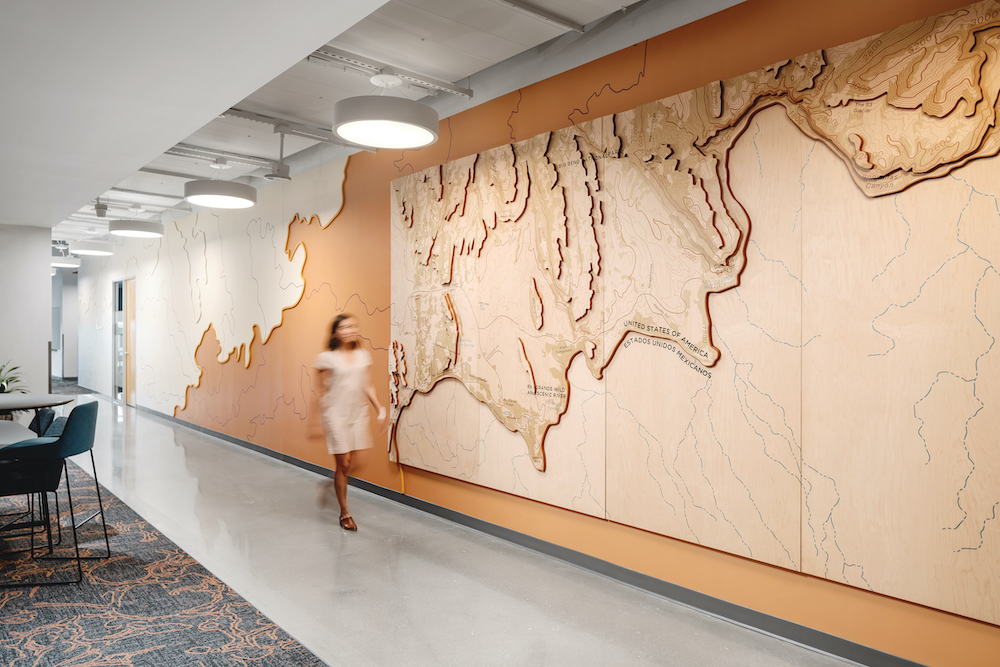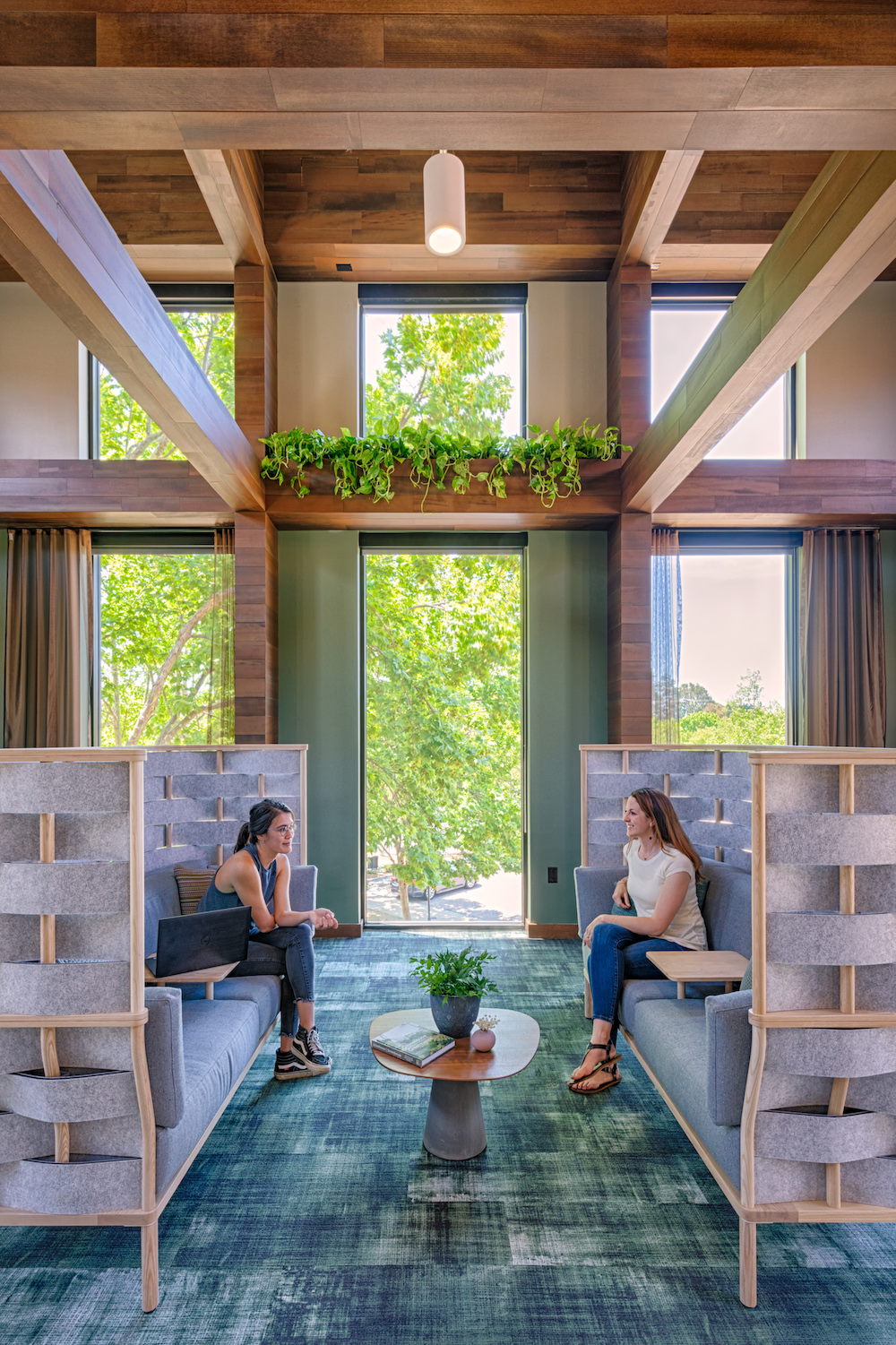Dayton Rush of Cushing Terrell shares two helpful tactics for thinking ecologically indoors.

The outdoors are a critical factor to maintaining balance mentally, emotionally, and creatively. And yet, we spend about 90% of our time indoors. On a day-to-day basis, it’s safe to say we’re not achieving anywhere near perfect balance. But rather than thinking of the two spaces as one versus the other, we can blend them — or at least create a seamless transition between the two — by leveraging ecological design thinking.
When talking with clients, our team frequently gets requests for improvements that will impact workers’ wellbeing, increase opportunities for collaboration, and provide greater flexibility (especially as it relates to hybrid work models). Much like communities at the city level, these clients are looking to optimize their spaces for their community, the workforce, which means enabling movement, easily and freely, to find a place that best suits groups and individuals for the task at hand, and to create a feeling of comfort, intrigue, and inspiration. And as most city planners will tell you, the solution is often in holistic thinking about the ecology of an environment.
Outdoor spaces function as a means to refresh, unplug, and recharge. An outcome that what we might call a traditional, or typical, office environment is not set up to achieve. Rather, typical offices are set up for financial/overhead efficiencies and cater to a limited number of predetermined uses. So how do we apply ecological design to harness the power of outdoor spaces and the vitally important benefits they provide and bring it indoors? Here are two tactics for thinking ecologically indoors:

1. Acknowledge Ecotones
As a part of the design process, we identify and emphasize movement, modes, and moments within a space. The method for establishing and visualizing these characteristics is known as a vibe map. Similar to a heat map, a vibe map documents usage patterns within a space — to model the activity and energy associated with various states of being throughout the workplace.
How does ecological design come into play with workplace movement, modes, and vibe maps?
“Modes,” as we define them, are accommodated best in environments with particular attributes, so it’s essential to understand how to plan and design spaces that are conducive to each — but also to understand how those spaces interact with each other. The vibe map makes identifying these in-between zones possible.
The concept is in direct reference to ecotones, the transitional area between two different ecosystems. These areas happen to be particularly rich and uniquely diverse. We can learn from the benefits of this biodiversity by planning spaces that accommodate the blending of uses or purposes while acknowledging the need for a wide variety of environments and conditions.
By applying ecotone traits and characteristics to interior spaces, it becomes possible to create buffers between activity zones and those zones meant (and needed) for quiet, focused time, while also making rich and varied chance interactions possible; the trademark of a collaborative workspace.

2. Frame the Views
This tactic could fit into the “moments” position of the ecotones equation mentioned above. Framing a view is just as it sounds: calling attention to a particular view from a particular vantage point. And it functions as one example of creating a moment that defines and/or enhances an interior space. When a view is framed, it captures a specific feature of the environment within it, and subtly instructs viewers to think about what’s captured in the frame in a certain way.
In the context of ecological design, one way to incorporate natural features within an interior space is to frame a surrounding natural environment – think a window at the end of a hallway that overlooks the bay, or a forest scene visible through the clerestory windows in a small conference room.
Framed views, or view corridors, as a driving force behind interior space planning can leverage the benefits of the outdoors without even needing to leave your desk. This tactic can be particularly effective in regions or areas where access to outdoors is either limited spatially or by climate. In these instances, even art or natural references contained within a frame or framed by architectural elements will have a similarly beneficial effect. Sometimes just simply harnessing views of the outdoors can be nearly as beneficial as bringing natural elements indoors.
In the end, the natural environment affects and is affected by everything we do. It’s reason enough to imagine a work environment where the line between interior design and natural, outdoor environments is less defined and more fluid. Bringing the outside in through ecological design galvanizes a stronger work ecosystem, in which the space feeds — or should we say fertilizes? — collaboration, inspiration, and overall well being.

